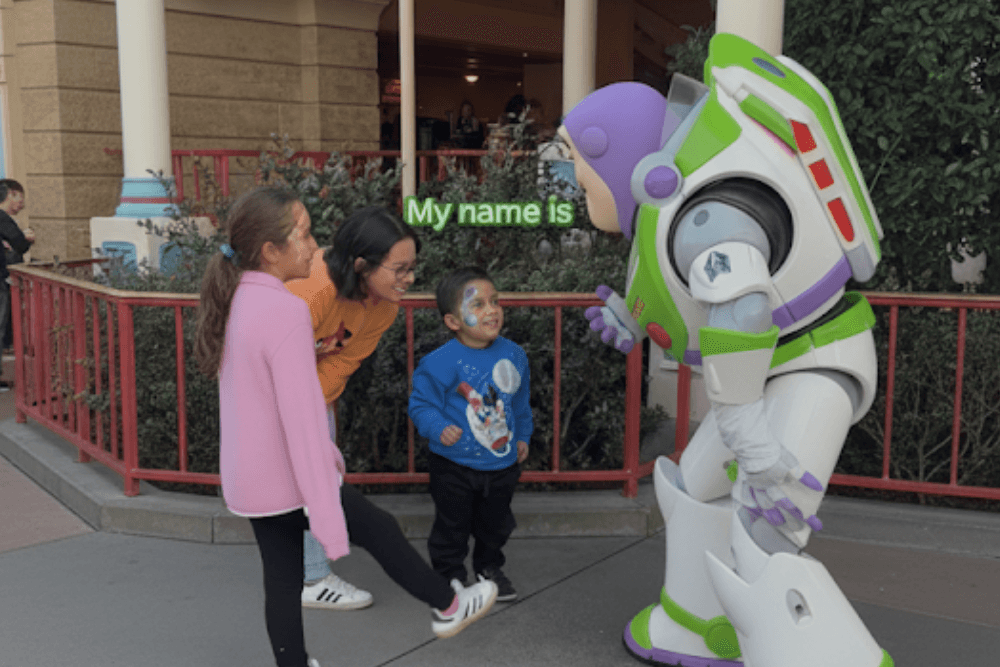After organizing hundreds of CART projects for companies across the United States, I’ve noticed the same questions come up repeatedly. Event planners call asking about the difference between CART and auto-captions. HR directors want to know if they’re legally required to provide it. Meeting coordinators are confused about pricing and logistics.
The reality is that choosing the right communication access solution can make or break an inclusive event. Get it wrong, and you risk excluding participants, facing compliance issues, or wasting budget on inadequate technology. Get it right, and you create genuinely accessible experiences that work for everyone.
This guide answers every question I’ve been asked about Communication Access Realtime Translation (CART) over my years in this field. So if you’re planning your first accessible event or looking to improve your current approach, you’ll find the practical insights you need to make confident decisions.
Understanding CART
What does “CART” actually stand for?
CART stands for Communication Access Realtime Translation. It is a professional service that provides the instantaneous, word-for-word conversion of spoken language into readable text. A certified provider uses a specialized stenotype machine to capture every spoken word, environmental sound, and relevant audio cue, displaying it on screens in real-time with over 98% accuracy.
What is the primary purpose of a CART service?
The primary purpose of CART is to ensure effective communication access for a wide range of individuals, including those who are deaf, deafened, or Hard-of-Hearing. The Americans with Disabilities Act (ADA) specifically recognizes CART as an auxiliary aid and assistive technology that facilitates “effective communication access,” a legal designation that highlights its importance in providing equitable participation in any live setting.
How is CART different from standard meeting notes or transcription?
The difference lies in speed, precision, and completeness. A regular typist can typically manage 60-80 words per minute, which is far too slow to keep up with natural speech. CART providers, using specialized stenographic keyboards, can write at speeds of
180-225+ words per minute, matching the pace of conversation. Furthermore, CART is strictly
verbatim, capturing every single word and utterance, unlike meeting notes which are summarized. It also includes crucial non-speech information (like speaker IDs and sound effects) that standard transcription omits.
Who is the primary audience for CART?
The primary beneficiaries are individuals who are Deaf or Hard-of-Hearing but primarily use English for communication. This includes late-deafened adults, people with progressive hearing loss who do not use sign language, and others who prefer reading to signing. However, the audience is much broader.
Can hearing people benefit from CART too?
Absolutely. CART is a powerful tool for universal design. Other beneficiaries include people with auditory processing disorders, individuals with learning disabilities that affect auditory comprehension, and English as a Second Language (ESL) learners who benefit from seeing the text. In fact, anyone in a noisy or acoustically challenging environment can use the live text stream to follow along and ensure they don’t miss key information.
Is CART the same as sign language interpreting?
No, they are complementary but distinct services that serve different needs and communities. Sign language interpreting is for individuals fluent in American Sign Language (ASL), a unique language with its own grammar and syntax. CART provides a word-for-word English text transcript for those who primarily use spoken/written English. For large events, the best practice is often to offer both services, allowing participants to choose their preferred accommodation.
What industries commonly use CART services?
CART is essential across multiple sectors including healthcare facilities for patient consultations, legal proceedings for court hearings and depositions, corporate environments for board meetings and training sessions, educational institutions for lectures and conferences, and government agencies for public meetings and hearings. Each industry has specific compliance requirements that professional CART services help meet.
How accurate is CART compared to Google’s live captions or Zoom’s auto-transcription?
While Google Live Captions and Zoom’s auto-transcription are convenient free options, they typically achieve 80-85% accuracy under optimal conditions, dropping significantly with accents or technical terminology. Professional CART consistently delivers 98%+ accuracy regardless of audio challenges, making it the reliable choice for critical communications where every word matters.
Can CART be used for medical appointments or legal proceedings?
Yes, CART is frequently used in medical and legal settings where accuracy is paramount. The strict confidentiality standards and professional ethics code that certified CART providers follow make them suitable for sensitive environments. Many healthcare systems and law firms regularly contract CART services to ensure ADA compliance and effective communication.
The Technology and Logistics of CART
What equipment does a CART provider use?
A professional CART provider arrives with a specialized toolkit. This typically includes a stenotype machine (a phonetic keyboard), a laptop running Computer-Aided Transcription (CAT) software, and backup equipment like secondary laptops and power supplies. For remote CART, they use high-quality audio equipment and have dedicated internet connectivity.
As an event host, what do I need to provide for an on-site provider?
To ensure the highest quality service, hosts should provide a stable table and chair with a clear line of sight to the speakers, accessible power outlets, and, most importantly, a quality audio feed. For large venues, a direct line from the sound system is strongly preferred over an open microphone.
How does remote CART work for virtual or hybrid events?
Remote CART integrates seamlessly with modern event platforms. The provider connects to your event’s audio feed via the internet. They listen through a high-quality stream and send the real-time text back to your event through several methods:
- Integration with the built-in captioning features of Zoom, Microsoft Teams, or WebEx.
- A dedicated, secure web URL (using platforms like StreamText) where attendees can view the scrolling transcript in a browser window.
- Picture-in-picture caption displays within your event platform.
This flexibility allows CART to serve both in-person and remote audiences simultaneously during hybrid events.
The CART Provider
What kind of training and certifications should I look for?
Look for providers with nationally recognized credentials from organizations like the National Court Reporters Association (NCRA). Key certifications include:
- CRC (Certified Realtime Captioner): The gold standard for CART work, requiring 180 wpm at 96% accuracy.
- CRR (Certified Realtime Reporter): Demonstrates realtime skill at 200 wpm.
- RPR (Registered Professional Reporter): A foundational court reporting certification.
These certifications are objective proof that a provider has met rigorous standards for speed and accuracy.
Why is a human provider so critical compared to an automated solution?
A human provider offers adaptability, judgment, and accountability that AI cannot replicate. The human brain is vastly better at compensating for accents, background noise, and inconsistent pronunciation by using context and reasoning. A human can prepare in advance by studying event-specific terminology, can ask for clarification if audio is unclear, and can accurately identify different speakers in a fast-paced discussion. This human intelligence is what ensures a truly meaningful and accurate transcript.
What ethical standards are CART providers held to?
Certified CART providers are bound by a strict Code of Professional Ethics, which is a cornerstone of the service. This code mandates absolute confidentiality, requiring the provider to treat all information from an assignment as private. It also requires impartiality, meaning the provider’s role is only to facilitate communication, not to participate or offer opinions. This ethical framework is essential in sensitive legal, medical, and corporate environments.
CART vs. The Alternatives
What is the real difference between CART and Closed Captions (CC)?
The most significant difference is Live vs. Pre-Recorded, which can be understood as Participatory vs. Consumptive Access.
- CART is for participatory access in live, interactive events like meetings or classes. It allows a user to actively engage in the ongoing discussion.
- Closed Captions (CC) are for consumptive access of pre-recorded media like films and online videos. They are created in a post-production workflow and embedded into the video file.
Aren’t Subtitles just a different name for Captions?
No, they serve a different purpose. The key difference is Transcription vs. Translation.
- CART and Captions are transcriptions that capture all audio in the original language for an audience that cannot hear. They include non-speech sounds like [door slams].
- Subtitles are translations of only the dialogue for a hearing audience that does not understand the language being spoken. They assume the viewer can hear the background sounds, so they are almost always omitted.
Why shouldn’t I just use the free auto-captions from my meeting software (ASR)?
This is the most important distinction for any event planner. While convenient, Automated Speech Recognition (ASR) has significant limitations compared to professional, human-powered CART.
- The Accuracy Gap: Professional CART delivers 98.5%+ accuracy consistently. The best ASR, under ideal lab conditions, might reach 95%. However, in real-world situations with background noise, accents, or multiple speakers, ASR accuracy can plummet to
as low as 60% or worse, meaning nearly half the words could be wrong. Even a 90% accuracy rate means 1 in 10 words is wrong, which could be the most critical word in a sentence (e.g., “positive” vs. “negative” in a medical diagnosis). - The Problem with Jargon: A human CART provider prepares for your event by loading their software’s dictionary with specialized terminology, proper names, and acronyms, ensuring they are transcribed perfectly. ASR has no real-world understanding and will frequently misinterpret complex terms, rendering technical content nonsensical.
- Missing the Message: ASR cannot interpret context, humor, sarcasm, or intent. It will frequently mistranscribe homophones (e.g., “their” vs. “there”) because it processes sound patterns, not meaning. A human provider listens for meaning, uses correct punctuation, and ensures the final text reflects the speaker’s true message.
- Accountability and Reliability: When an ASR system fails, there is no one “at the wheel” to fix it. A human CART provider actively monitors the audio feed, can troubleshoot technical issues, and is professionally accountable for delivering a quality service.
Legal, Cost, and Planning for Success
Is providing CART a legal requirement?
In many cases, yes. Laws like the Americans with Disabilities Act (ADA), Section 504, and the Individuals with Disabilities Education Act (IDEA) require organizations to provide “effective communication”. When an individual requests CART as a reasonable accommodation for a live event, an organization is often obligated to provide it, giving “primary consideration” to the person’s preferred method. Solely providing inaccurate ASR may not meet this legal standard.
How much does CART service typically cost?
CART pricing varies based on several factors including event duration, location, preparation requirements, and whether the service is on-site or remote. Professional CART providers typically charge hourly rates ranging from $75-150+ per hour, with minimum booking requirements. While this may seem higher than automated alternatives, the investment ensures 98%+ accuracy and professional reliability that meets ADA compliance standards.
Why does CART cost more than automated solutions?
The cost reflects the high level of human expertise involved. You are paying for a certified professional’s years of training, their specialized equipment (stenotype machines can cost over $5,000), their professional insurance, their preparation time for your specific event, and their guaranteed 98%+ accuracy—a level of quality and reliability that ASR cannot provide.
What are the key factors for a successful CART implementation?
To ensure success, remember to:
- Book qualified, certified providers early.
- Provide comprehensive preparation materials (agendas, speaker lists, glossaries).
- Ensure a high-quality, direct audio feed for the provider.
- Plan for appropriate breaks to maintain provider accuracy.
- Test all technology in advance of the event.
How far in advance should I book CART services?
For optimal results, book your CART provider at least 2-3 weeks in advance for standard events, and 4-6 weeks for specialized conferences or events requiring extensive preparation. This lead time allows the provider to study your materials, load custom dictionaries with technical terminology, and ensure availability. Last-minute bookings may result in limited provider options or higher rush fees.
What happens if the audio quality is poor during my event?
Professional CART providers are trained to handle challenging audio conditions, but they cannot transcribe what they cannot hear clearly. If audio becomes unclear, the provider will indicate “[inaudible]” in the transcript and may request audio adjustments. This is why providing a direct audio feed from your sound system is crucial for maintaining CART accuracy throughout your event.
How does CART work for breakout sessions or multiple simultaneous speakers?
For events with multiple concurrent sessions, you’ll need separate CART providers for each room requiring coverage. During panel discussions or meetings with frequent speaker changes, CART providers use speaker identification techniques, noting transitions like “SPEAKER 1:” or using actual names when known. Providing speaker names and seating charts helps ensure accurate attribution.
What file formats can I receive my CART transcript in after the event?
Most CART providers can deliver final transcripts in multiple formats including PDF, Word document (.docx), plain text (.txt), and sometimes specialized formats like RTF or ASCII. The transcript is typically cleaned and formatted for readability while maintaining verbatim accuracy. Delivery timeframes usually range from same-day to 48 hours post-event.
Is CART available for telephone conferences or audio-only events?
Yes, CART providers can accommodate phone conferences and audio-only events through remote connection methods. The provider dials into your conference line or receives a direct audio stream. However, phone-based CART may have slightly reduced accuracy due to compressed audio quality compared to in-person or high-quality digital audio feeds.
How does CART integrate with live streaming or recorded events?
CART text can be integrated into live streams through various methods including open captions burned into the video feed, closed caption tracks, or separate text displays. For recorded events, the CART transcript can be used to create accurate closed captions in post-production, significantly reducing the time and cost typically required for manual captioning.
What should I do if my CART provider experiences technical difficulties during the event?
Professional CART providers come equipped with backup equipment including secondary laptops, power supplies, and internet connections. If technical issues arise, the provider will work quickly to restore service. As an event host, having a designated point person to assist with troubleshooting and maintaining communication with the CART provider helps minimize disruptions.
Can CART services be combined with sign language interpreting?
Absolutely. Many inclusive events provide both CART and ASL interpreting simultaneously, allowing participants to choose their preferred accommodation method. This dual approach ensures maximum accessibility since some deaf and Hard-of-Hearing individuals prefer visual English text while others prefer American Sign Language. Both services can operate independently without interfering with each other.
The Right Access, Every Time
While automated technologies are improving, they are not a replacement for the skill, accuracy, and accountability of a professional CART provider. Understanding the differences is key to making the right choice. For informal situations where some errors are acceptable, ASR can be a useful tool. But for any live event where communication is critical in either business, law, medicine, or education, CART remains the gold standard for providing true and effective access.
The investment in professional CART services is an investment in inclusion, demonstrating that every voice deserves to be heard, and every participant deserves to understand.
Ready to ensure everyone has equal access at your next event? Contact us today to discuss your specific needs and learn more about our professional CART services.






